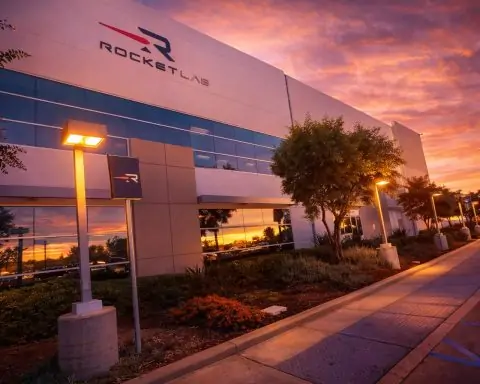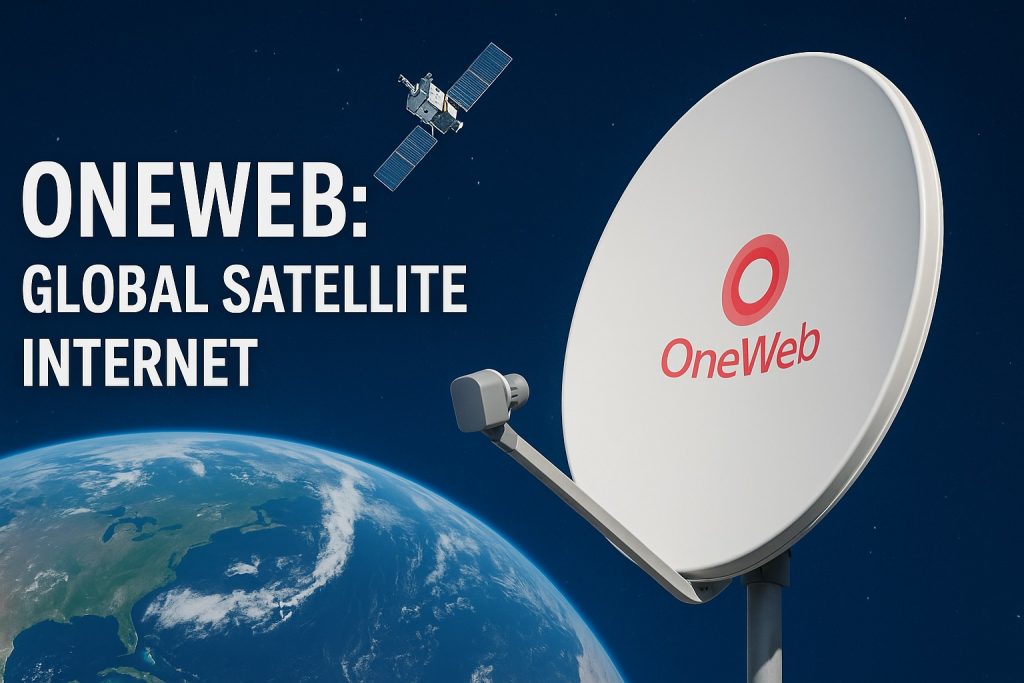- Starlink is a SpaceX satellite internet constellation that began launching in 2019 to deliver broadband virtually anywhere on Earth.
- As of late 2024, SpaceX had launched over 7,000 Starlink satellites, with FCC authorization for about 12,000 and potential expansion beyond 30,000 in the future.
- Starlink satellites orbit at approximately 550 km altitude in multiple orbital shells, enabling lower latency than geostationary satellites.
- SpaceX reached 1 million Starlink subscribers by the end of 2022 and 4 million by September 2024.
- Each Starlink satellite is equipped with phased-array antennas, and some models include inter-satellite laser links for in-space data routing.
- The network forms a moving mesh that can serve users on ships, vehicles, and at high latitudes, including polar regions, due to inclined and polar orbital shells.
- Residential Starlink typically delivers 50–150 Mbps download speeds with 20–40 ms latency, bursts up to about 200 Mbps, and upload speeds around 5–20 Mbps, with a soft 1 TB monthly cap introduced in 2023.
- Starlink Business provides 150–500 Mbps down, uses a larger antenna costing about $2,500, and charges around $500 per month, while Starlink Maritime can reach about 350 Mbps at sea with dual-dish terminals costing around $10,000 upfront and $5,000 per month.
- The Starlink Kit includes a ~0.6 m dish that self-aims, a mounting tripod or pole, a Wi‑Fi router, and a power supply, with the dish nicknamed “Dishy McFlatface.”
- As of 2025, Starlink service is available in over 100 countries and territories across continents, though local regulatory approvals vary and some nations such as China, Russia, and Iran restrict or ban service.
Introduction
High-speed internet access is increasingly seen as essential infrastructure, yet billions worldwide still lack reliable connectivity. Traditional wired broadband and cellular networks often fail to reach remote or underserved areas, leaving a “digital divide.” Enter Starlink, a satellite internet constellation developed by SpaceX. Starlink is deploying thousands of low Earth orbit (LEO) satellites to deliver broadband internet virtually anywhere on the globe. Since launching its first satellites in 2019, Starlink has rapidly expanded service to cover around 130 countries and territories [1], amassing millions of users. This report examines how Starlink’s novel approach – dubbed a “Sky-Fi” revolution – is reshaping global internet access through its performance, coverage, and challenges, and how it compares to other satellite internet providers.
Starlink Overview and Global Connectivity
Starlink consists of a massive constellation of small LEO satellites that communicate with ground terminals to provide internet service. As of late 2024, SpaceX had launched over 7,000 Starlink satellites [2], rapidly approaching its initial FCC authorization of ~12,000 satellites (with plans for possible expansion to 30,000+ in the future). These satellites orbit at approximately 550 km altitude in multiple orbital “shells,” enabling near-global coverage at much lower latency than traditional geostationary satellites. SpaceX reached 1 million Starlink subscribers by end of 2022 and 4 million by September 2024 [3] – a testament to pent-up demand for better rural and mobile connectivity. Each satellite is equipped with phased array antennas and some have inter-satellite laser links, allowing them to hand off data across the network. The ultimate goal is to blanket the Earth in reliable broadband, including areas previously unreachable by fiber or cell towers.
Crucially, operating in low orbits gives Starlink a coverage and latency advantage. The satellites move in relation to the Earth, forming a mesh network that can serve users even in motion (on ships, vehicles, etc.) and at high latitudes. Unlike geostationary satellites which sit over the equator, Starlink’s moving satellites (inclined orbits including polar) can provide connectivity from the tropics to polar regions. The network already covers North and South America, Europe, large parts of Asia-Pacific, and growing areas of Africa and the Middle East. In short, Starlink is realizing the vision of a globally accessible internet service, which has profound implications for personal, business, and governmental connectivity worldwide.
Starlink Services and Use Cases
Residential (Home) Internet
Starlink’s primary offering is aimed at personal/home internet users, especially those in areas with poor terrestrial broadband. A standard Starlink home setup consists of a user terminal (dish antenna) and Wi-Fi router. Customers simply mount the pizza-box sized, flat Starlink dish in a location with open sky view (e.g. rooftop or yard); the phased-array antenna automatically aligns itself to track satellites [4]. The system then provides a home with high-speed internet via the Starlink satellite network. Users report that installation is straightforward and typically only requires powering the unit and connecting the router – the dish (often nicknamed “Dishy McFlatface”) motors itself to the optimal angle and searches for satellites [5].
Once connected, Starlink can deliver broadband-class performance. Residential customers are told to expect download speeds of 50–150 Mbps and latency of 20–40 milliseconds [6], which in many cases rivals or exceeds DSL and older cable connections. In practice, some users see even higher bursts (Speeds can reach ~200 Mbps under good conditions [7]), and upload speeds range around 5–20 Mbps [8]. Unlike many terrestrial fixed wireless or satellite providers, Starlink initially offered unlimited data usage, making it suitable for bandwidth-heavy activities like streaming HD video or online gaming. (A soft 1 TB monthly fair-use cap was introduced in 2023 for network management, but with no hard cut-offs [9].) The low latency enabled by LEO satellites means Starlink can support real-time applications – users can make video calls or play online games, scenarios where legacy satellite (with 600+ ms lag) would struggle. In essence, Starlink has allowed rural households to have an internet experience much closer to that of urban fiber/cable users, shrinking the connectivity gap.
Business and Enterprise Solutions
Beyond homes, Starlink offers services tailored for businesses and enterprise users. In 2022 SpaceX introduced Starlink Business, a higher-tier service designed for business, enterprise, and demanding users who require greater throughput or service robustness [10] [11]. Starlink Business uses a larger, high-performance antenna and is advertised to deliver download speeds of 150–500 Mbps (considerably higher than the standard plan) [12]. The business hardware comes at a premium – about $2,500 for the antenna – and the service costs around $500 per month [13]. In return, businesses get higher throughput, better uptime SLAs, and prioritized 24/7 support [14]. This is appealing for remote offices, critical infrastructure sites, or any enterprise location off the fiber grid. Early adopters include mining and energy companies in remote fields, research facilities, and small ISPs looking to backhaul local networks.
SpaceX has also pursued niche enterprise markets with specialized offerings. For example, Starlink Maritime launched in 2022 to serve ships and offshore platforms – it provides up to ~350 Mbps at sea, using robust dual-dish terminals (costing ~$10,000) and a steep $5,000/month plan [15]. Commercial airliners are another target: SpaceX secured approvals to equip aircraft with Starlink, promising passengers broadband in-flight internet. Likewise, Starlink is being tested on large vehicles like buses and trains. These offerings demonstrate Starlink’s strategy to become a versatile platform adaptable to consumer, business, and industrial connectivity needs – whether on land, at sea, or in the air.
Rural and Remote Connectivity
One of Starlink’s most transformative impacts is on rural and remote area connectivity. Traditional ISPs often cannot justify running cables or cell towers to serve sparsely populated regions such as mountainous villages, isolated islands, or deserts. Starlink, by contrast, only requires that the user terminal have a clear view of the sky – the satellites handle the long-distance link. This has made it possible for people in rural communities, farms, and developing regions to get fast internet for the first time. For example, rural areas in Canada and Australia were among early Starlink markets, where residents went from dial-up or no service to >50 Mbps broadband overnight. In the United States, Starlink has been life-changing for off-grid homes in Appalachia and ranches in the West, enabling remote work, online education, and telemedicine where it was previously impossible.
A Starlink “Dishy” user terminal installed on a deck, as shipped in 2021. The flat-panel dish uses a phased array to electronically steer its beams and track Starlink satellites, requiring only power and a clear sky view [16]. This plug-and-play setup is ideal for rural homes and remote sites without access to fiber or cable.
Notably, Starlink has also stepped in to provide emergency connectivity during natural disasters and crises. Because it does not rely on local infrastructure, Starlink can keep people connected when floods, wildfires, or hurricanes knock out ground networks. In 2022, Starlink terminals were shipped to war-torn Ukraine to restore internet service after communications infrastructure was damaged [17]. Similarly, Starlink kits have been deployed to disaster zones (such as Pacific islands hit by volcanoes or hurricanes) to enable coordination and relief efforts. These cases illustrate the profound potential of a globally available, rapidly deployable internet service. Starlink is bridging the digital divide for rural populations and adding resiliency to the world’s communications by providing an alternative path when traditional networks fail.
Performance: Speed and Latency
Starlink’s performance has generally been a game-changer relative to earlier satellite internet, thanks to its low-earth-orbit architecture. The shorter distance to LEO satellites (a few hundred kilometers overhead) yields dramatically lower latency. Starlink users typically experience ~20–40 ms latency [18] – on par with DSL or cable internet, and a fraction of the ~600 ms latency common with geostationary satellites [19]. This low lag makes realtime activities (Zoom calls, online gaming, VoIP) feasible over satellite for the first time. Independent tests have confirmed Starlink’s latency advantage; for example, UK trials saw ~34 ms average latency, compared to >500 ms on older services [20]. In essence, Starlink’s network can behave much like a terrestrial broadband link from the user’s perspective.
In terms of bandwidth, Starlink’s throughput is also vastly higher than legacy satellite services. Residential plans are advertised in the tens to low-hundreds of Mbps. Many users routinely see downloads between 50 and 150 Mbps, and under light network load Starlink can deliver bursts over 200 Mbps [21]. Upload speeds around 10 Mbps are common, sufficient for HD video conferencing or uploading large files. These figures are an order of magnitude above incumbent satellite ISPs (which often maxed out at 10–25 Mbps). Starlink’s high capacity comes from a combination of advanced technology and frequency reuse: each satellite uses phased-array beams and a large spectrum allocation (Ku/Ka-band) to serve many users with broadband speeds simultaneously. SpaceX continually launches more satellites and upgrades gateways, which has improved capacity over time – though there have been growing pains. In mid-2022, as the user base grew, median download speeds observed by Ookla fell from ~90 Mbps to ~62 Mbps [22], reflecting cell congestion in some areas. SpaceX acknowledged this and noted that speeds should improve as more satellites launch and additional ground stations come online [23]. To manage demand, Starlink implemented a network management policy (temporary speed de-prioritization after 1 TB data use in a month for standard users) [24]. Despite these issues, Starlink still far outperforms alternative satellite options and continues to increase its capacity with each launch, aiming to maintain high speeds even as millions more subscribe.
It’s worth noting that Starlink’s performance can vary based on location, network load, and even environmental factors. Users in areas with excess satellite coverage often see the highest speeds, whereas those in “limited capacity” cells (dense user concentration) may experience throttling during peak hours. SpaceX has responded by launching laser-linked Starlink V2 Mini satellites with four times the capacity of earlier models, and by exploring user-end improvements (like Starlink “Mini” portable terminals) [25]. In sum, Starlink’s speeds and latency are generally revolutionary, bringing true broadband to places that never had it, though users may see service quality evolve as the constellation and user base grow.
Equipment, Installation, and Pricing
Starlink User Hardware: Each Starlink customer requires a Starlink Kit, which includes a flat circular user terminal (satellite dish), a mounting tripod/pole, a Wi-Fi router, and power supply. The current standard dish is a rugged pizza-sized plate about 0.6 m across, containing a sophisticated phased-array antenna. Unlike traditional satellite dishes, no manual pointing is needed – the Starlink terminal electronically steers its beams to track satellites and will even rotate/tilt itself automatically for optimal view [26]. This “self-aiming” capability makes installation very DIY-friendly. Customers typically mount the dish on a rooftop, wall, or ground pole using the included hardware (professional installation is optional but usually not required). As long as the dish has a clear view of the sky (minimizing obstructions like trees or buildings), it can connect to the moving satellite fleet. The indoor unit plugs into the dish via a single cable, providing power and network connectivity to the antenna. Within minutes of powering on, the system can be online. This simplicity of setup has been a key to Starlink’s rapid rollout – users in remote cabins or boats can get connected without specialized technicians, a stark contrast to laying miles of cable.
Pricing: Starlink’s pricing model has evolved as the service expanded. In the United States (and similarly in many countries), the residential Starlink service costs about $110–$120 USD per month [27] for unlimited usage at a fixed service address. There is also a one-time upfront cost for the hardware kit – originally $499, later increased to around $599–$699 for the standard kit [28] [29] (prices have fluctuated with inflation and regional adjustments). This upfront fee covers the user terminal and Wi-Fi router. While a few hundred dollars is a significant expense, many rural users find it justified compared to the alternative of no broadband at all. SpaceX occasionally offers promotions or region-specific discounts; for instance, in some countries with low uptake, monthly fees were cut by 50% in 2022 to improve affordability [30].
Customers who need mobility can opt for add-on plans. The Starlink Roam (RV) option allows using the dish in multiple locations (or on the move), for an extra ~$25/month on top of the standard fee [31]. This is popular with RV owners, truckers, and digital nomads, though roaming users are de-prioritized in congested areas. There are also specialized plans like Starlink Maritime and Starlink Aviation which have their own pricing (often several thousand dollars per month, as mentioned earlier, due to their enterprise focus). For the average consumer, however, the key point is that Starlink’s monthly rate is comparable to urban broadband service costs, making it a viable substitute. The higher hardware cost is a barrier to entry for some, but the lack of long-term contract (Starlink is month-to-month) and continually improving performance add to its value proposition.
It should be noted that Starlink’s prices are not static – SpaceX has adjusted fees in response to capacity and market conditions. In some congested markets, the monthly fee was temporarily raised to $120 [32], while in “excess capacity” regions it has been lowered or customers given incentives. As of mid-2024, the general trend has been slightly rising equipment and service prices (the standard kit went from $499 to $599+; monthly from $99 to $110+) [33] [34]. This reflects the massive ongoing investment in the satellite network. Even with these hikes, many find the service price reasonable for the performance and unique coverage it provides. Going forward, competitive pressure and economies of scale (e.g. mass-produced user terminals) may influence Starlink’s pricing in different markets.
Satellite Constellation and Fleet Details
Starlink’s underlying infrastructure – its satellite fleet – is unprecedented in scale and deployment tempo. The constellation consists of compact LEO satellites, each roughly 260 kg in mass, packed with high-throughput communications gear. SpaceX produces these satellites in-house at a rapid clip (reportedly building six satellites per dayas of 2023) [35]. The satellites feature multiple KU/Ka-band phased array antennas to communicate with user terminals and gateway stations, and newer models include laser inter-satellite links to route data in space [36] [37]. This mesh networking means even if a ground station is far away, Starlink satellites can pass user data between themselves until reaching one with a downlink – enabling coverage over oceans or polar regions where ground backhaul is sparse.
SpaceX’s Falcon 9 rockets launch Starlink satellites in batches of up to 60 (for the older generation) at a time [38]. These satellites are flat-stacked inside the rocket (like a stack of flat cards) and deploy in orbit like a “train,” eventually spacing out into their designated orbits. The image below shows a bundle of Starlink satellites prior to deployment, illustrating how SpaceX’s efficient launch packing has been crucial to building the megaconstellation so quickly.
Starlink satellites stacked for launch (60 per Falcon 9 in early missions) ready to deploy in orbit. By operating ~550 km above Earth in low orbits, Starlink satellites achieve low latency but must work in large numbers to cover the globe. SpaceX had launched over 7,500 Starlink satellites by early 2025 [39].
The satellites operate in several orbital shells: the first shell (~1,600 satellites) at 550 km, 53° inclination covers mid-latitudes; additional shells at 70°+ inclinations expand coverage to polar regions, and future shells may operate at ~340 km and ~590 km altitudes for capacity expansion [40]. This arrangement ensures overlapping coverage – at any time, a user terminal can see dozens of satellites above the horizon. Each satellite only covers a given area for a few minutes before handing off to the next one in line, requiring the constellation to have many satellites in each region for seamless service. This is why the sheer number of satellites is critical: unlike a single geostationary sat covering a whole continent, Starlink’s model uses swarms of LEO sats each covering a small cell on the ground, passing the connection in a relay. SpaceX’s aggressive launch schedule (often 1–2 Starlink launches per week) is steadily increasing capacity and filling in coverage gaps. By March 2025, Starlink had about 7,580 satellites launched in total (including decommissioned units) and was continuing to loft hundreds of new satellites quarterly [41].
Managing a constellation of this size has raised technical and regulatory challenges. SpaceX designed Starlink satellites to have autonomous collision avoidance systems and Hall-effect ion thrusters (using krypton/argon gas) for orbit adjustments [42]. The satellites actively dodge known debris and other spacecraft by maneuvering when tracking data indicates a possible conjunction. SpaceX also committed to fast de-orbiting of old satellites: Starlink satellites are intentionally deorbited after about 5–7 years of service, well before they become space junk [43]. They use their onboard thrusters to drop altitude and burn up in the atmosphere, with 95% of components expected to ablate on re-entry. This far exceeds international orbital debris mitigation guidelines (which often allow decades in orbit post-mission) [44]. By maintaining a high replacement rate and responsible de-orbit plan, SpaceX aims to minimize Starlink’s contribution to space debris – a critical issue given the ~42,000 satellites it ultimately hopes to deploy. Astronomers have expressed concerns about the brightness and prevalence of Starlink satellites interfering with telescope observations, and SpaceX has responded with engineering tweaks (darker coatings, sunshades on satellites) to reduce their reflectivity [45]. The constellation’s growth is continuously monitored by regulators and the scientific community, as Starlink is effectively pioneering a new scale of space utilization.
In summary, Starlink’s constellation is a feat of engineering: a mesh network in the sky consisting of thousands of mass-produced satellites, orchestrated to deliver broadband to any point on Earth. Its successful operation so far is proving that such a network can be built and maintained, though not without ongoing efforts in satellite design, launch cadence, and orbital management to address the challenges that come with this “revolution” in space-based communication.
Global Coverage and Availability
One of Starlink’s defining achievements is the breadth of its service availability. In just a few years, Starlink has extended internet coverage to users on almost every continent. As of early 2025, Starlink service is available (either in full operation or public beta) in over 100 countries ranging from major economies to small island nations [46]. The map of Starlink’s reach grows each month as regulatory approvals are obtained and satellites cover new regions. Below is a list of countries/territories where Starlink has been publicly available (service active for general customers) as of 2025:
- North America: United States (all 50 states plus Puerto Rico & U.S. Virgin Islands) [47], Canada [48], Mexico, Bahamas, Dominican Republic, Costa Rica, Guatemala, Honduras, Jamaica, Haiti, Panama, Trinidad and Tobago, and others in the Caribbean and Central America.
- South America: Brazil, Argentina, Chile, Colombia, Ecuador, Peru, Paraguay, Uruguay, Bolivia (planned), and others. Starlink is active in much of South America’s interior and Andean regions where fiber coverage is sparse.
- Europe: United Kingdom [49], Ireland, France [50], Germany, Italy, Spain, Portugal, Netherlands, Belgium, Poland, Austria, Switzerland, Sweden, Norway, Denmark, Finland, Estonia, Latvia, Lithuania, Czech Republic, Slovakia, Slovenia, Croatia, Bulgaria, Romania, Hungary, Greece, Malta, North Macedonia, Moldova, Ukraine, and more – effectively most of Europe except a few countries pending approval.
- Africa: Starlink initially launched in Nigeria in 2023 and has since expanded to at least 18 African countries [51] [52] including Kenya, Rwanda, Malawi, Mozambique, Zambia, Zimbabwe, Botswana, Benin, Sierra Leone, Eswatini, Ghana, Liberia, Niger, and Burundi, with additional countries slated as regulatory permits are secured. Coverage spans parts of West, East, and Southern Africa, focusing on nations that have embraced the service to connect rural communities.
- Asia: Starlink is available in a growing number of Asian markets. Notable examples include Japan (service began 2022), Philippines (first in Asia, 2022 rollout), Malaysia (2023), Indonesia (2024) [53], Mongolia [54], Georgia [55], Maldives, and Nepal (in testing). In the Middle East/Central Asia, Starlink launched in markets like Qatar, Palestine, and Israel by 2024–2025. Large Asian countries such as India and Pakistan are still pending regulatory approval (Starlink has applied but not yet launched service there as of 2025).
- Oceania: Australia and New Zealand were among the early Starlink regions (starting 2021) [56]. Service now also covers Pacific Island nations including Fiji, Tonga [57], Samoa, Cook Islands [58], Solomon Islands, and Micronesia [59], providing much-needed connectivity across Polynesia and Micronesia.
(Note: The above list is representative and not exhaustive; Starlink’s availability is continually expanding. Some countries have partial or trial coverage, and a few (e.g. China, Russia, Iran) have not authorized Starlink domestically due to regulatory or political reasons, even though the satellites pass overhead.)
Starlink’s broad availability underscores its mission of global internet access. People in places as diverse as the high Arctic, remote African villages, and mid-ocean ships are using the same system to get online. SpaceX has effectively bypassed the limitations of terrestrial infrastructure, making location far less of a barrier to connectivity. However, obtaining local regulatory approval remains a gating factor in some nations – for instance, Starlink’s planned entry into India faced a multi-year licensing battle [60]. In many cases, governments must allocate spectrum and establish rules for SpaceX to operate within their borders. As of 2025, Starlink has succeeded in gaining access in most open markets, though it continues to negotiate in some large markets (India, several Middle Eastern and Asian countries). Where it is available, Starlink often has a waitlist due to high demand, but the company’s ongoing satellite launches and ground station build-out aim to eliminate coverage gaps and increase capacity for more users.
Regulatory and Operational Challenges
While Starlink’s technical achievements are impressive, it also faces a range of regulatory, environmental, and competitive challenges as it reshapes global connectivity. Key challenges include:
- Licensing and Spectrum Regulation: Every country has its own telecommunications regulations, and Starlink must obtain permission to provide service and use radio frequencies in each jurisdiction. This process can be complex – for example, in India, Starlink was barred from selling preorders in 2021 pending license approval, and has been in a regulatory impasse over spectrum allocation since 2022 [61]. Incumbent telecom operators sometimes lobby against Starlink, fearing competition; in India, terrestrial telcos pushed for satellite spectrum to be auctioned (favoring themselves) rather than allocated, delaying Starlink’s entry [62]. In France, Starlink received an authorization in 2021 that was later temporarily annulled by the Conseil d’État (State Council) on grounds that the regulator hadn’t done a public consultation [63]. After a review and public input, the license was reissued, allowing Starlink to resume service in France [64]. These examples show how Starlink must navigate varying regulatory landscapes, sometimes adapting its approach (e.g. participating in public hearings, demonstrating benefits to rural connectivity) to gain approval.
- Political and Security Issues: Because Starlink provides a means of uncensored, global internet access, some authoritarian governments view it as a threat to control. Notably, Russia and China have voiced opposition to Starlink’s deployment – a 2025 report highlighted that Starlink’s use in Ukraine’s defense against Russia’s invasion drew ire and even threats of targeted countermeasures from Russia [65]. China, meanwhile, is developing its own LEO broadband constellations and has reportedly explored ways to disable or “kill” Starlink satellites in a conflict scenario [66]. Starlink signals have been subject to jamming attempts in conflict zones (Russia attempted to jam Starlink in Ukraine, leading SpaceX to harden its systems via rapid software updates). Furthermore, Starlink terminals in countries like Iran are technically illegal – yet many were smuggled in to bypass internet blackouts, serving as a tool for free information flow [67]. This creates geopolitical wrinkles: SpaceX is a private company, but its network has strategic implications, as seen by U.S. and allied military contracts for Starlink services. Going forward, Starlink must contend with these national security sensitivities, balancing commercial goals with government partnerships or restrictions.
- Astronomical and Environmental Concerns: The sheer number of Starlink satellites has raised alarms among astronomers, who find that satellite streaks can photobomb telescope images and interfere with observations of the night sky. Professional astronomy groups have worked with SpaceX to mitigate this, resulting in “DarkSat” and “VisorSat” modifications to reduce satellite brightness [68]. While these help, Starlink is still frequently visible and is only the first of many planned mega-constellations. There are calls for industry-wide standards on satellite reflectivity and coordinated scheduling to avoid disrupting science. Environmental concerns also extend to space debris – the possibility of collisions in orbit. With thousands of moving satellites, Starlink increases the burden on space traffic management. SpaceX has implemented automated collision avoidance and adhered to a policy of prompt de-orbiting (with over 90% reliability targeted for de-orbit after mission life) [69]. Nonetheless, other satellite operators (e.g. OneWeb) have reported close calls with Starlinks, and agencies like NASA have expressed concern that future launches need careful coordination to prevent overcrowding in key orbits. Regulators like the U.S. FCC now require debris mitigation plans as part of licensing, and Starlink will continuously be under scrutiny to ensure its revolutionary network doesn’t become a hazard to the space environment.
- Competition and Market Pressure: Starlink’s emergence has spurred both existing satellite operators and new players to react. Companies like Viasat and Hughes (longtime GEO satellite ISPs) have lobbied regulators to slow Starlink’s expansion – for instance, Viasat filed complaints about Starlink’s environmental impact and tried to block launches pending review. At the same time, those companies are upping their game technologically (Viasat launched new high-throughput GEO satellites in its ViaSat-3 series to offer higher speeds, and Hughes’ latest Jupiter 3 satellite aims to increase its capacity and even reach 100 Mbps service tiers [70] [71]). Internationally, government-backed constellations are rising: OneWeb, now partnered with Eutelsat, completed its first-generation LEO constellation in 2023 to focus on enterprise and mobile backhaul markets [72] [73]. Amazon’s Project Kuiper is on the horizon with planned LEO satellites, and China has announced its own LEO internet constellations. In sum, Starlink will face a more crowded marketplace going forward, which could impact pricing and requires it to continuously innovate to maintain performance leadership. Consumers will benefit from the competition driving better satellite internet options overall, but Starlink’s first-mover advantage sets a high bar that competitors are racing to meet.
Starlink vs. Competing Satellite Internet Providers
Starlink’s novel approach has upended the satellite internet sector, long dominated by geostationary providers like Viasat and HughesNet. Now, multiple systems with different architectures vie to connect users in remote areas. Below is a comparison of Starlink with some major competing satellite internet providers, highlighting their key technical and service differences:
| Provider | Satellite Network (Orbit & Size) | Coverage (Service Areas) | Typical Speeds (Download) | Latency (Round-trip) | Consumer Plans & Pricing |
|---|---|---|---|---|---|
| SpaceX Starlink | Low Earth Orbit (LEO)constellation at ~550 km altitude. ~7,500 satellites launched as of 2025, aiming for 12k+ [74] [75]. | Global coverage (~130 countries) except a few with regulatory blocks [76]. Continual expansion to new regions (land, sea, air). | ~50–200 Mbps for standard users (up to ~220 Mbps peak) [77] [78]; ~150–500 Mbps on Starlink Business [79]. | ~20–40 ms (fiber-like latency) [80], thanks to low orbit; excellent for real-time applications. | Residential: ~$110–$120/month [81](unlimited data); ~$599 hardware. Business: ~$500/month, $2,500 hardware [82]. No long-term contracts; extra fee for portability. |
| Eutelsat OneWeb | Low Earth Orbit (LEO)constellation at ~1,200 km altitude. 648 satellites (global network completed 2023) [83]. No direct consumer service – partners integrate OneWeb capacity. | Global capacity achieved (covers from Arctic to tropics) [84], but service is delivered via enterprise and telecom partners rather than directly to individuals. Focus on remote enterprise, maritime, aviation, and cellular backhaul. | Not publicly marketed to consumers. Estimated up to ~150–200 Mbps throughput per user terminal [85] based on LEO performance. Enterprise terminals may support high aggregated bandwidth for trunking. | ~50–100 ms (estimated). Higher than Starlink’s latency due to 1,200 km orbits, but still far lower than GEO latency [86] [87]. Suitable for VPN, voice, basic real-time use. | No public retail plans; OneWeb sells capacity to governments, ISPs, airlines, etc. Pricing is negotiated case-by-case via distributors. (Likely significantly higher cost per site than Starlink, reflecting enterprise service model). |
| Viasat | Geostationary (GEO) satellites at ~35,700 km altitude. Fleet of 3–4 main satellites (ViaSat-1, -2, -3 series) plus partnerships. New ViaSat-3 satellites (>1 Tbps capacity each) launching 2023–2024 to expand global coverage. | Regional coverage via high-capacity spot beams. Strong presence in North America, South America, and Europe/Mediterranean (via ViaSat-2 and KA-SAT); global coverage expected once all ViaSat-3 satellites are operational. Good for fixed locations within satellite footprints, including maritime/air on popular routes. | Consumer plans range from ~12 Mbps up to 100 Mbps in some areas [88](the upper end requires new satellites and ideal conditions). Speeds can drop during peak times or in congested beams. Data caps or “soft” usage thresholds apply on most plans, affecting sustained speeds. | ~600 ms (typical GEO latency) [89]. High latency impacts real-time interactivity (e.g. noticeable lag in video calls or online gaming). Viasat is exploring latency reduction via caching/hybrid systems, but physics limit major improvement for GEO. | Tiered plans by data allowance: e.g. $50–$150/month for home plans, varying by speed and data cap. Lower-end plans might offer ~25 Mbps with a 60 GB monthly cap, while top “premium” plans (in select areas) advertise ~100 Mbps with higher cap. Equipment often provided with a rental fee or upfront ~$300. Contracts typically required (24-month common). |
| HughesNet | Geostationary (GEO) satellites (EchoStar XVII, XIX, Jupiter 3 at ~35,700 km). Primarily serves North America and parts of Latin America (through subsidiaries). Jupiter 3 (launched 2023) boosts capacity and allows newer plans up to 100 Mbps. | Coverage concentrated in the Americas: continental US, Alaska, Canada, Mexico, Brazil, and a few other Latin American countries via the Hughes/Jupiter satellite footprints. Little to no coverage in EMEA or Asia-Pacific (Hughes focuses on Western Hemisphere; sister partners cover India, etc., with different satellites). | Historically 25 Mbps max on consumer plans; new Hughes “Fusion” plans combine satellite and 4G to offer up to 50–100 Mbps in some areas [90] [91]. However, speeds can throttle to 1–3 Mbps if you exceed low data caps. Generally adequate for email, browsing, SD streaming – struggles with heavy or multiple HD streams. | ~600 ms on pure satellite links (GEO latency). Hughes’ Fusion hybrid service can improve practical latency by using terrestrial paths when available [92], but satellite-only sessions have high lag. Not ideal for interactive apps beyond basic web use. | Plans usually start around $65–$75/month for 15–25 Mbps with a 10–30 GB monthly data cap, up to ~$150 for larger caps (100 GB+) or higher speeds (where offered) [93] [94]. Once the data cap is reached, speeds are throttled significantly. Equipment typically costs $300–$450 or a monthly lease fee. 24-month contracts standard. |
Key takeaways: Starlink’s LEO approach gives it far superior latency and higher average speeds than GEO-based rivals [95] [96]. This makes Starlink the preferred choice for consumers or businesses that need performance akin to terrestrial broadband, and it has no hard data caps. OneWeb, also LEO, shares the low-latency advantage and global reach, but it isn’t targeting individual households yet – instead focusing on carrier-grade solutions (so a rural consumer would more likely use Starlink, whereas a telecom company might use OneWeb capacity to extend cellular backhaul). Viasat and HughesNet, the established players, offer wider availability in some regions initially and often lower entry prices, but their services come with significant limitations: much higher latency, modest speeds, and strict data caps. They remain options for users where Starlink or other LEO services are not yet available or for those who only need light usage and can tolerate the latency. However, as Starlink and forthcoming LEO constellations expand, the GEO incumbents are under pressure to innovate or cede the performance-sensitive market segments. We are likely entering a period where hybrid approaches might emerge – for example, SES’s new system pairs its MEO satellites with Starlink for cruise ship connectivity [97] – blending networks to exploit each’s strengths. For now, Starlink clearly has reset expectations of what satellite internet can do, forcing competitors old and new to race toward higher speeds and lower latency.
Conclusion
In just a few years, Starlink has fundamentally altered the landscape of global internet access. By leveraging a revolutionary LEO satellite constellation, it broke the old trade-offs of satellite internet – delivering broadband speeds and low latency to places that were once condemned to dial-up or nothing at all. This “Sky-Fi” revolution is reshaping lives in rural heartlands, enabling businesses in remote outposts, and providing critical links during emergencies. Technically, Starlink has proven that a large-scale, privately-operated space network can be both feasible and economically viable, inspiring a new space race among companies and nations to build similar systems.
Yet, Starlink’s journey is just beginning. Challenges remain in capacity scaling, regulatory navigation, and ensuring that the night sky (and orbital environment) remain sustainable even as tens of thousands of satellites launch. Competition from OneWeb, Amazon, and others will test Starlink’s ability to maintain its early lead. Additionally, the service’s long-term business success will depend on balancing affordability with the massive infrastructure investments and operating costs. Regulators worldwide will be watching to see how Starlink addresses concerns from spectrum management to national security to astronomy.
Neutral observers note that Starlink is neither a cure-all nor a trivial undertaking – it is a bold solution with its own complexities. But its impact so far is undeniable: millions of previously disconnected people now have fast internet, and incumbents are rethinking their strategies. In a broader sense, Starlink has advanced humanity toward a future where access to information is not constrained by geography. The concept of a “global village” is a step closer, as Starlink’s satellites weave a web of connectivity over every corner of Earth. How this new connectivity is managed and shared will be a critical story in the years ahead. For now, Starlink stands as a landmark in engineering and ambition, reshaping global internet access one satellite launch at a time.
Sources: The information in this report is based on data and statements from SpaceX/Starlink, regulatory filings, and analyses by industry experts and journalists. Key references include SpaceX’s public documentation, the Starlink Wikipedia page (for up-to-date technical and availability info) [98] [99], news articles by Reuters and others on Starlink’s regulatory battles [100], and comparison reports highlighting differences between Starlink and other providers [101] [102]. These and other sources are cited inline throughout the report for verification and further reading.
References
1. en.wikipedia.org, 2. en.wikipedia.org, 3. en.wikipedia.org, 4. en.wikipedia.org, 5. en.wikipedia.org, 6. en.wikipedia.org, 7. www.satelliteinternet.com, 8. cybernews.com, 9. en.wikipedia.org, 10. en.wikipedia.org, 11. en.wikipedia.org, 12. en.wikipedia.org, 13. en.wikipedia.org, 14. en.wikipedia.org, 15. en.wikipedia.org, 16. en.wikipedia.org, 17. worldpopulationreview.com, 18. en.wikipedia.org, 19. cybernews.com, 20. tech.yahoo.com, 21. www.satelliteinternet.com, 22. en.wikipedia.org, 23. en.wikipedia.org, 24. en.wikipedia.org, 25. en.wikipedia.org, 26. en.wikipedia.org, 27. en.wikipedia.org, 28. www.starlinkinfo.com, 29. www.starlinkinfo.com, 30. en.wikipedia.org, 31. en.wikipedia.org, 32. www.starlinkinfo.com, 33. www.starlinkinfo.com, 34. www.cnbc.com, 35. en.wikipedia.org, 36. en.wikipedia.org, 37. en.wikipedia.org, 38. en.wikipedia.org, 39. idemest.com, 40. en.wikipedia.org, 41. idemest.com, 42. en.wikipedia.org, 43. en.wikipedia.org, 44. en.wikipedia.org, 45. en.wikipedia.org, 46. en.wikipedia.org, 47. en.wikipedia.org, 48. en.wikipedia.org, 49. en.wikipedia.org, 50. en.wikipedia.org, 51. africa.businessinsider.com, 52. africa.businessinsider.com, 53. worldpopulationreview.com, 54. worldpopulationreview.com, 55. worldpopulationreview.com, 56. en.wikipedia.org, 57. worldpopulationreview.com, 58. en.wikipedia.org, 59. worldpopulationreview.com, 60. www.reuters.com, 61. www.reuters.com, 62. www.reuters.com, 63. en.wikipedia.org, 64. en.wikipedia.org, 65. www.space.com, 66. www.space.com, 67. en.wikipedia.org, 68. en.wikipedia.org, 69. en.wikipedia.org, 70. cybernews.com, 71. cybernews.com, 72. www.satelliteinternet.com, 73. www.satelliteinternet.com, 74. idemest.com, 75. en.wikipedia.org, 76. en.wikipedia.org, 77. en.wikipedia.org, 78. www.satelliteinternet.com, 79. en.wikipedia.org, 80. en.wikipedia.org, 81. en.wikipedia.org, 82. en.wikipedia.org, 83. en.wikipedia.org, 84. www.satelliteinternet.com, 85. www.satelliteinternet.com, 86. geekabit.co.uk, 87. galaxybroadband.ca, 88. cybernews.com, 89. cybernews.com, 90. tech.yahoo.com, 91. cybernews.com, 92. cybernews.com, 93. cybernews.com, 94. cybernews.com, 95. cybernews.com, 96. cybernews.com, 97. en.wikipedia.org, 98. en.wikipedia.org, 99. en.wikipedia.org, 100. www.reuters.com, 101. cybernews.com, 102. www.satelliteinternet.com










